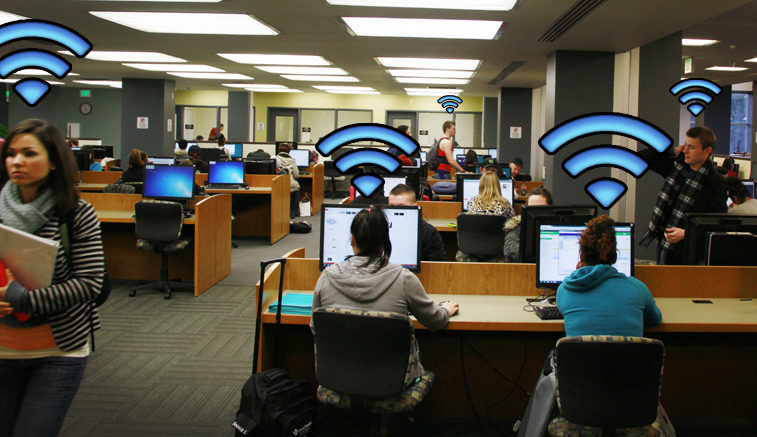After years of desperately pressing on “Teachers Internet” in order to get a decent wireless connection in the Westhill building, students have finally received the long-awaited “Students’ Internet.” Everyone initially rejoiced at the news of speedy Internet without having to buy the “Teachers’ Internet” password off some seedy guy in the back of their health class. However, the student WiFi did not come without serious issues.
First and foremost, the connection is dreadful. Over two thousand students attend Westhill, and the vast majority of them have cell phones and other mobile devices. One server is simply not enough for everyone. Connecting to the WiFi takes about five minutes, if one can connect at all, and websites take eons to load. It is so infuriating that most students simply give up and use a data connection. Teachers often have us students perform research on our phones, or go to websites like Socratic, Kahoot!, Schoology, or Google Classroom in order to complete assignments or follow a lesson plan. Assuming the website is not blocked, it can take a long time out of class to connect.
“It is slow. Sometimes it does not connect. It does not work! And it doesn’t allow me to go on some social networks,” said Theresa Persico (’17).
Then, of course, there is the useless blocker. Any social media site or website with “questionable” content is blocked. Students cannot access them on their mobile devices or school computers. The fact that our Internet usage is policed is ridiculous, and the blocker barely allows any websites past its meticulous eye. It is impossible to do research and complete our work when every site is blocked. Fear not, there is a solution: most Westhill students have downloaded VPN blockers on their cell phones in order to counteract the school’s blocker. While the VPN does reverse the effects, it saps battery life and is just another app to take up data storage. There is even a way to get these apps on one’s web browser on the school computers. In essence, the blocker is useless, and merely an inconvenience.
“The WiFi terrible,” says Meghna Sharma (’17). “It was a good idea but the execution is quite lacking since it always lags and most of the time we cannot even acces any of the sites we may need, like PowerSchool or even the school website.”
If someone wants to go on social media during school, why is it the school’s responsibility to stop them? That student is causing detriment to their own grade, and it is their fault if they are texting or browsing the web during a lesson. A student should be able to go on social media during down time like study hall or at lunch, but the school should not force discipline upon its students. The students must accept responsibility for their own phone usage and take the consequences that come with an unrestricted WiFi connection.
All in all, a school WiFi for students is a good idea in theory, but of course, executed poorly. With proper revisions, the school WiFi could become a valued resource. For now, it is merely a botched attempt at positive change.





